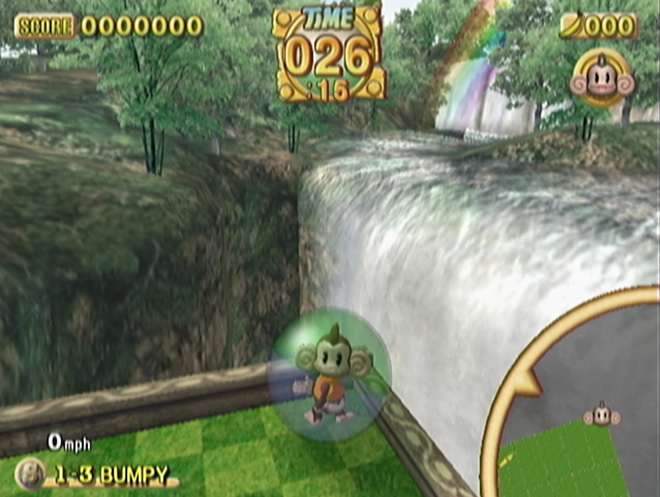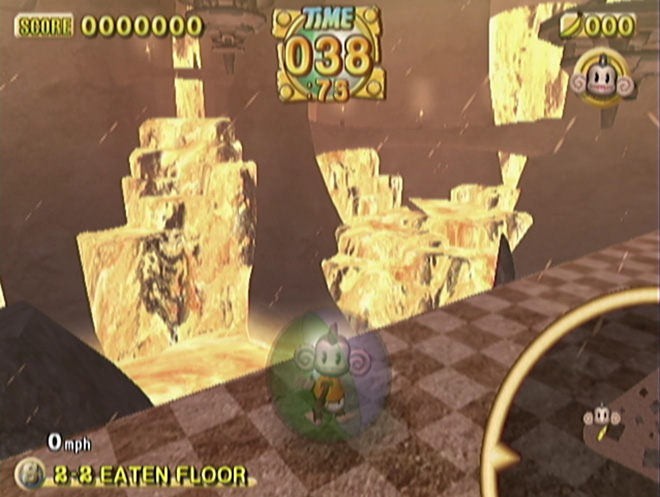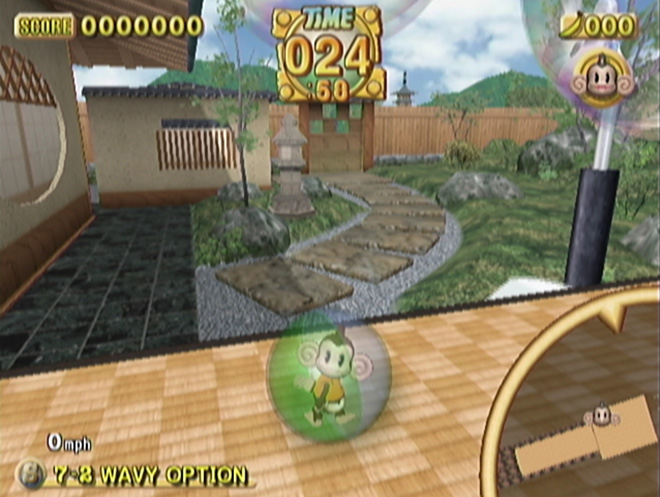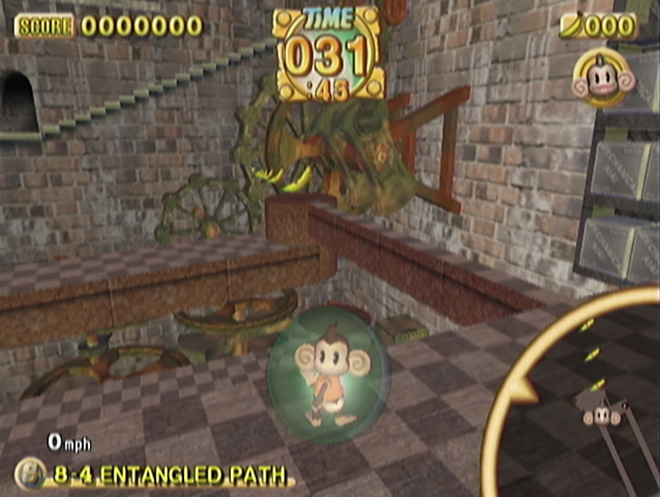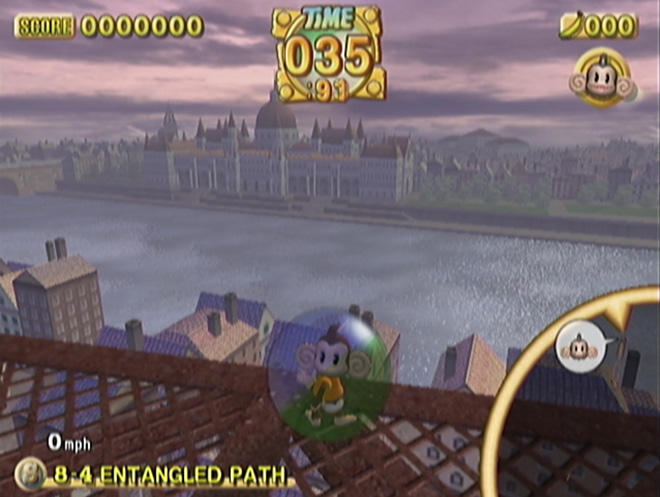 |
||
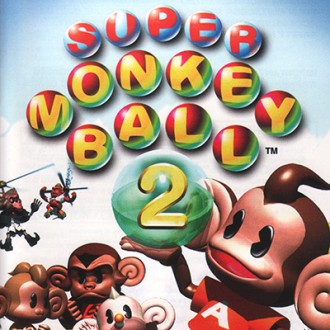 Rollin’ Back: Rediscovering Super Monkey Ball 2By Clark DeVitisJuly 27th, 2014Posted in Sega
In today’s gaming world, it’s hard to think of many games that can be so easy to pick up and play casually, yet be so difficult to master. In fact, finding many games like this throughout all of the generations is no easy task. To me, it is something that can be extremely difficult to achieve for game developers, but when it is, can provide some of the deepest gameplay experiences we can imagine; allowing the well-practiced to show off their hard-earned skills to newcomers. Super Monkey Ball 2 for the Nintendo Gamecube is one of these games that has achieved the huge gap between the regular player, and the veteran.
Unprecedented Precision of ControlSuper Monkey Ball 2 is truly in a league of its own for this reason. Somebody new can pick up the game and love it the first time; playing mainly the simple levels to get used to the control. It is this first time that hooks you to the game. To put it in perspective, I got this game when I was seven and fell in love with it. I would play all the levels I could and all the mini games but never got too involved with the game. I simply wasn’t old enough to be great at a video game. But coming back and playing it now with better reflexes and coordination has changed the game. Once you get a feel for how incredible the control is (in all its subtle and nuanced glory), you realize there’s more to this game than the basic levels. You find yourself craving more. You move on to the advanced levels. It is here that you realize you need to master that left thumb, or else you won’t be able to break through the oh-so-desired goal ribbon. This is one of the greatest core elements of Monkey Ball itself: the controller scheme. Just one thumbstick. It’s truly amazing what Amusement Vision was able to accomplish within a platforming game, while being limited to one control option. This allows for such simplicity, yet such complexity for someone who is experienced with the game. The best and simplest example of the variations in thumbstick movement is the level “Giant Comb.” Right at the start, you are greeted with, literally, a giant comb spinning at a fatal speed. If it hits you, it means certain death and one less life; a definite cause of concern for anyone that has played the game and realizes how precious those lives are. On first thought you may think “How do I know when to slow down?” or maybe “I should just gun it and see if I get lucky and don’t get hit.” Upon further inspection you see faint lines, telling you exactly where the comb passes by, indicating you must stop in between them. This is where the thumb mastering comes in hand. It requires quick stopping and moving, therefore your thumb must go from full forward, to full back in a quick instant. If you don’t push enough, or push too hard, it would mean death by comb. But after trying the level over and over, you get a feel for it; for how the control and physics work, and the thumb starts to learn those movements by muscle memory. This level shows another aspect of what makes Monkey Ball so great. There are multiple ways you can complete a level, depending on your play style. You can either take it slow and steady, cautious and ready for anything; or you can play your luck and try to find the quickest route possible (such logic could be “maybe the comb will hit me and I’ll go flying into the goal if I have the angle just right!”). The fast and lucky logic comes with experience though. When you continue to trudge your way through the expert levels, trying to complete the stages, you become accustomed to the feel of the roll. You may find yourself being launched in the air on “Pistons,” and with the skill you’ve acquired you will be able to correct your landing point with much precision, possibly allowing you to beat the level in record time. The precision that comes with this practice can be taken to another level; to a thing Brandon and I like to call, “One Shots.” One Shots are easily what creates the gap between a great player, and a true master. It is the amount of precision, patience, and timing, that makes it so unique. By the point you are able to successfully complete One Shots, your feel for the game has basically reached its pinnacle. You would think it is a way to quickly have fun and wow people, but when you reach the expert and master stages, you find they become necessity. Returning to the “Pistons” example here, you could complete it the slow way by navigating on the narrow path between the deadly pistons, or you can use them to your advantage and fling yourself to the goal. Eventually you gain muscle memory, and these one shots become more than luck, as you can repeat them at will. The level “Clock Face,” the last level of Master Mode, is the definitive stage that showcases the subtleties of Monkey Ball control. First, it requires a one-shot style bounce that lands you on a certain piece of rotating platform. Then, using very minute movements of the thumbstick, you must roll yourself across two platforms to one that is rotating very fast. You stick on this one without hitting the bumpers until you get near the goal, hop on the final platform and within a split second you climb towards the goal. It captures the essence of Monkey Ball within one small area and you can watch this in our video above. It is the control of Monkey Ball which really differentiates it from other platformers. Most do have a since of tight control to get your character where it needs to go, but some are different. For example, Mario games have a loose feel of your character, with simply forward, backward, up, and down as the controls. But Super Monkey Ball 2, on the other hand, has 360 degrees of control, where even the slightest movement can be the difference between life and death.
A Different Kind of DifficultySuper Monkey Ball 2 has more to do with just the gameplay, but how the game is formed; how the challenges are accomplished, items are unlocked, and so on and so forth. The natural progression of the difficulty is perfect, which many other platformers fall short of achieving. Monkey Ball challenge mode is different from many other games within its genre. While most platforming games include increasingly difficult levels, where some seem straight-up impossible, Monkey Ball goes against the grain. While you progress in challenge mode, whether it be Beginner, Advanced, or Expert, or even Master mode, you will get held up by a stage on occasion. But Super Monkey Ball 2 manages to keep everything difficult within reach for anyone. Even if you can’t complete a level with the lives given, you remain certain and confident that it could be done next time you try. Whereas with other platformers, certain things just seem downright impossible. While a challenge in Monkey Ball may be to complete a level, a challenge for another platformer may be something boring such as beating a level you have already seen but within a time limit, or without getting hurt. This gives Monkey Ball an edge on its competition because you are always seeing something fresh and exciting. The game also has a nice and pleasing way of unlocking things to give you some breathing room for the tough levels. To unlock certain items, you must earn play points. These are given as a reward for how many levels you complete within one continue. It is pretty easy to unlock these, given you can get about 7000 points just from playing through Expert Mode. With the play points, you can purchase lives. Yes, you can purchase lives. This alleviates the pains of difficult levels, for if you buy two lives, you have doubled your chance of beating a stage. Though this lessens the burden of worrying over lives, there still is a great challenge to the game; you can’t become wasteful and you still will tear through lives and have trouble completing some levels. The lives are just a nice little motivation to keep you going. While other platformers would leave you in the dust, in a feeling of abandonment, Monkey Ball manages to keep you coming back for more, keeping everything just within reach, with just the right touch of difficulty.
Dense AtmosphereThe atmosphere of Super Monkey Ball 2 is very complex. Its hard to imagine that a puzzle/platformer game could have an amazing atmosphere, but it is no ordinary game in that genre. Monkey Ball manages to have an incredible atmosphere, while remaining bound to small, labyrinth-like worlds. From my experience, most games with an atmosphere that is this stunning seem to be Action, Adventure, or Role Playing Games. This game breaks that stereotype. It manages to have a dense atmosphere that you love and desire to be in, despite being built around such a straightforward game type. First, the environment is beautifully constructed and designed with every detail in mind. From the dangling vines, massive waterfalls, and blue skies that greet you in “Monkey Island,” to the final level in the metal objects suspended in the vacuum of space in “Space Colony,” this game covers everything in terms of the environment. Although it is just a backdrop to the labyrinthine level you are playing, you can see how much work was put in to provide a beautiful image to please the eye of the player. Take a good, long, look at the “Bubbly Washing Machine” world. There is immense attention to detail in every corner of the world. There is decorative plants near the home, Japanese architecture, lanterns in the yard, gorgeous mountains and forest in the background, a hot tub, and rocks and vegetation that covers the yard. All of these details to the world give you a sense that you are actually at a home in Japan, relaxing in the back yard and discovering a lifestyle that is so different than the United States; and what’s really incredible is that it can be delivered through the means of such a simple video game. The icing on the cake for the beautiful worlds is the music that accompanies it. On “Monkey Island” you enter a world hearing just bongos, then some booming horns come in and create just a perfect mesh between the world and the music. It gives you a sense of being in a jungle, but with a modern twist that is the horns, thus creating music that immerses you within the world. It is incredible what the music can do for all of the worlds. The world “Clock Tower Factory” is a industrial, utilitarian, area comprised of bricks and moving gears (something that I usually don’t find interesting in a game since I am a fan of very natural-looking levels), with a city far below. I wouldn’t normally love a world with such aesthetics as this, but the music that plays when you open up a level here is makes it perfect. It is very electronic and industrial, with synthesizers, drum and bass beats, and an unforgettable melody. It takes this level and makes you realize the beauty of the world and what went into it. It is hard to imagine that bricks can be beautiful, but taken in with the music it really proves to deliver an incredible experience.
Better Than Full-Game Mini-gamesThe majority of what I wrote about Super Monkey Ball 2 is the main game, with me just scraping the surface of how incredible the atmosphere is. I talked about how this game breaks the bounds of the platformer genre, putting it on a level of its own. But one thing I cannot forget is the Mini-Games. I think it is safe to say that [many of] the SMB2 minigames are arguably more fun than their true sport counterparts. This is obviously a very subjective statement but I actually feel this way. For example, Monkey Golf 2. This game is a simple 9 or 18-hole golf minigame, but it manages to be very exciting. It is extremely easy to pick up and play, has simple controls, and a beautiful environment and music that comes tucked in the package. Just like a real golf game, you get great excitement out of smashing the ball all the way to the green, or you feel the agony of falling into a sand trap. But you don’t need to buy a golf game to experience it; rather, you have it bundled into the video game you have come to love. And rather than playing on an earthly world with humans, you get to play in a surreal world as cute monkeys, which is just awesome. That is just one of the minigames in detail, but truly, all of them hold their own against the full game counterparts. They are fantastically fun, and also can be challenging. I highly suggested playing and getting great at all of them, and they can also be great party games if you have a few friends over.
“You Are Super Monkey Ball 2’s Best Friend”Super Monkey Ball 2 has so much more to it than quick, pick-up-and-play gaming. It can be mastered, and there is great depth in the game, always giving a new challenge to conquer, or new level to discover. I had no idea a Master Mode even existed when I was young, but here I am, 12 years later, and I am still discovering more of the game. The game is unlike anything else, and continues to blow my mind every time I play it. Incorporating excellent control, gorgeous worlds, and marvelous minigames, this game holds a very special place in my heart. As a game that was originally planned for the Dreamcast and was designed by the legendary Toshihiro Nagoshi of Sega, I feel like this Gamecube game deserves a spot here on our site. There is a very unique and ultimate tribute to the system itself, that only true masters have found, hidden within the most difficult levels in the game. To see it for yourself, check out the video we have made, but only if you are okay with spoilers. The treat just makes me yearn for the game to have been released on Dreamcast, but what can I say, the Gamecube is a gorgeous console as well. You’ll know what I meant by that last sentence soon. |
||
© 2012-2022 |
|
|
|
|






